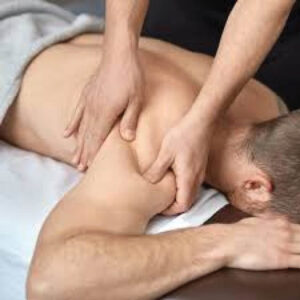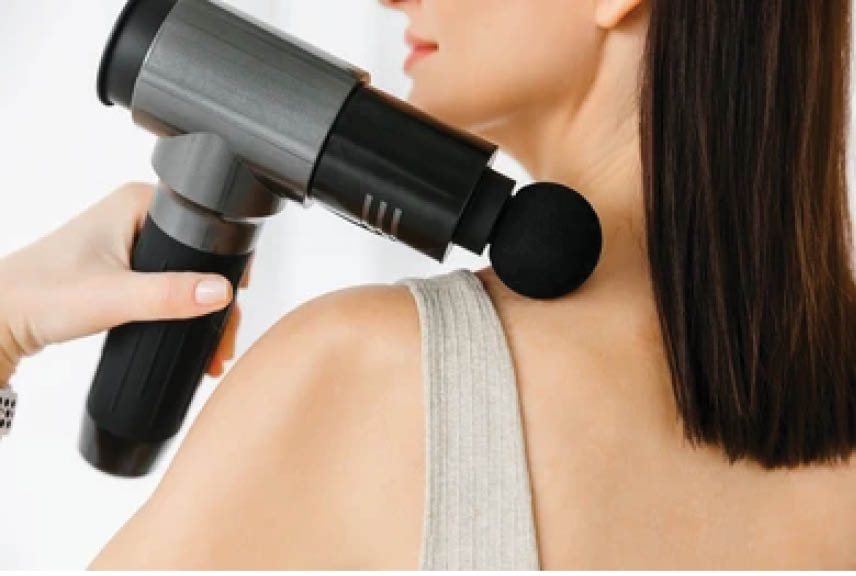 Physiotherapists are like artists who have mastered the science of movement therapy to help patients in releasing the stress and tension from their body, thus creating the right dynamics in their system to facilitate healing, and ultimately strengthening muscles towards a fit and sound body. Physiotherapists repeatedly practice till they attend unprecedented skill levels in resolving key problems in their patient’s body. Then at some point, it almost seems like magic to many when a physio manipulates the patients tissues releasing knots, taut bands and restoring fluidity of movement.
Physiotherapists are like artists who have mastered the science of movement therapy to help patients in releasing the stress and tension from their body, thus creating the right dynamics in their system to facilitate healing, and ultimately strengthening muscles towards a fit and sound body. Physiotherapists repeatedly practice till they attend unprecedented skill levels in resolving key problems in their patient’s body. Then at some point, it almost seems like magic to many when a physio manipulates the patients tissues releasing knots, taut bands and restoring fluidity of movement.
One of the fundamental skills that physiotherapists learn very early on is that of soft tissue manipulation, more commonly referred to as ‘massage’, in general parlance. Therapeutic massage is a fundamental physiotherapeutic skill that involves the manipulation of the body’s soft tissues through specialized hands-on movements. The purpose is to influence cellular changes in the soft tissues that promote healing, reduce pain, and enhance overall wellness.
Massage techniques involve a combination of hands-on movements, such as kneading, petrissage, vibrations, stretching, compressing, and gliding that may range from stroking to deep pressure. Massage is typically combined with first line treatments in manual manipulation to achieve therapeutic goals. The effects of massage therapy are not only physical, but also help calm the mind. It stimulates blood vessels, collagen fibres, muscle and tendon tissues and nerve cells. Some effects include:
- Reduced stiffness in muscles and tendons.
- Improved tissue elasticity and increase in range of motion of joints.
- Decreased inflammation and swelling in soft tissues.
- Reduced scar tissue formation.
- Influencing blood flow in the muscles, thus promoting nutrient exchange and removal of toxins, decreasing pain
- Increasing the levels of endorphins, serotonin, and dopamine: hormones that help decrease pain, regulate sleep and mood, and promote relaxation.
Depending on the treatment goals, different types of massage therapies are considered. Each massage type works on a different principle to manipulate the tissue and produce the desired effects. While some techniques use light pressure and strokes, others may use heat or knead deeper to stimulate the inner layers of the tissue:
Swedish Massage: Promotes relaxation in the soft tissues through repeated long strokes, kneading and elongating techniques that encourage blood circulation, loosen tissues, and remove stiffness. For lower back pain, the patient lies face-down, and the therapist focuses on the back muscles, hamstrings, and calf muscles. The health of the hamstrings and calf muscles play important roles in promoting back strength and lengthening these muscle groups can help improve lower back pain. Swedish massage may help reduce scar tissue formation, modify muscle tone, and increase muscle length and flexibility. This massage also reduces inflammation and emotional stress, and enhances overall wellness.
Neuromuscular Massage Or Trigger Point Therapy: Also called myofascial trigger point therapy or myofascial release, this is a specialized form of massage that involves the application of firm, sustained, and controlled pressure over painful, taut bands of muscle, called myofascial trigger points, to release tension and facilitate blood flow.
Myofascial trigger points are like small knots in a thick rope, which represents the muscle fiber. The presence of the knot makes the rope shorter—and the length of the rope becomes shorter as the number of knots increases. Since trigger points make the overall length of the muscle fiber shorter than normal, their presence limits the lengthening and shortening of the muscle.
Neuromuscular massage aims to relieve stress and release tension in the trigger point by specialised manoeuvres and techniques. The goal of these manoeuvres is to release the knots and make the fascia free once again. After the fascia is released, blood flow is stimulated into the area (which was previously deprived of adequate blood and oxygen) to foster healing and eventually relieve pain. With experience, physios can pinpoint trigger points by understanding the pain patterns of the patient.
Massage by hand is an excellent therapy which has been used and benefited people for centuries. However, recently various massage machines have become available, which are sometimes used by professional physios to save stress on their hands. More importantly, these have allowed people to self-apply massage. The question is are they effective and a real substitute for hand massage? The answer is yes, they are, but only some, and only if used correctly.
There are these two basic types of massage machines: the Kneading Type and the Vibration Type. Cushion and chair massagers that would work on the principle of kneading would be moderately effective and allow practically unlimited self-massage. This makes them great for something like relaxing after a hard day’s work. However, these would not be as effective as a professional therapist, and their kneading contacts are not directed by a therapist with skills and knowledge. Thus, they would not be a serious consideration for therapeutic applications or for massaging deep problem spots.
Rather than using manual pressure to penetrate and massage, vibration massagers use vibrational waves, just like ultrasound or laser. This means it can penetrate deeper with less risk and can be a lot more effective. It does not need special skill to use. Thus, a lot of professional therapists actually use vibration massagers themselves in practice, and they are ideal for self-use too.
Using a hand-held massager is simple. You place the vibrating head on the muscle, making good contact, and allow the vibrations to penetrate. With an effective machine it’s the vibrations that do the work so there is no need to assist by pressing in or rubbing. Using an effective vibration massager, the vibrations transfer from the head of the machine to the muscle and penetrate deeply. There’s a bit of misinformation as regards the need to press in the heads of massager for penetration, but that’s wrong. Vibrations always penetrate more than pressing-in. That’s why buildings collapse over 100 km away from the centre of an earthquake!
- The Healing Power Of ‘Shinrin-Yoku’ (Forest Bathing) - 28 December2024
- The Incomparable Health Benefits Of Plant-Based Diet - 30 November2024
- The Role Of Physiotherapy In Mental Health: A Holistic Approach - 28 September2024
